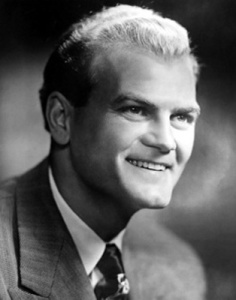The extraordinary Canadian tenor Jon Vickers, who appeared with the Chicago Symphony Orchestra on only one occasion, died on Friday, July 10, 2015, in Ontario. He was 88.
For the opening subscription concerts of the sixty-eighth season on October 23 and 24, 1958, music director Fritz Reiner led the Orchestra, the Chicago Symphony Chorus—in its second season and prepared by its founder Margaret Hillis—and soloists Adele Addison, Regina Resnik, Vickers, and Jerome Hines in Beethoven’s Ninth Symphony. The concert opened with the composer’s Leonore Overture no. 3.
In the Chicago American, Roger Dettmer described Vickers as “a Canadian tenor on his vocal way to Valhalla.” And in the Chicago Tribune, Claudia Cassidy wrote that “Jon Vickers’ tenor was stronger than I remembered, as if Bayreuth had invigorated it” (he had made his debut at Wagner’s annual festival only a few months before, as Siegmund in Die Walküre).
Cassidy continued, praising that Reiner delivered, “a Beethoven Ninth Symphony so magnificent that it ranks high in the company of great performances, and may be the finest thing Mr. Reiner has done in and for Chicago. . . . That Mr. Reiner is a master conductor goes without saying, though it is a pleasure to say it. That he can be a great interpreter of essentially spiritual music is not so commonly understood. But no one who heard this Ninth could deny it, for there it was, fully known, fully projected, fully shared. He had what he has made a superb orchestra and what he has insisted on having to match it, a chorus of such quality its newness is hard to remember. Like the orchestra, that chorus can attack like the blow of a fist.
“Out of all this came a Ninth full of mesmeric detail, yet all of one thrusting design soaring to the great finale. The strangely fascinating cacophony of the first movement was crystalline in style, through full of moods and shadows in sound. The scherzo, never capricious, but volatile as ether, held the ear taut and, oddly, the heart. The slow movement sang in layers of floating sound, austere for all its tenderness. The ‘Ode to Joy’ burst out with the jubilation of the freed spirit. When it was over the audience burst into a roar—the kind of roar that means hundreds of people have been, quite without knowing it, holding their breath in pure excitement.”
Numerous obituaries have been posted online, including in the Chicago Tribune, The New York Times, Opera News, and The Guardian.




Leave a comment
Comments feed for this article